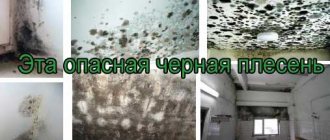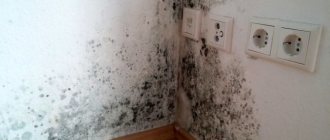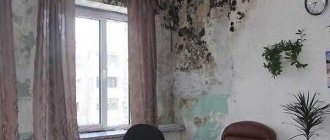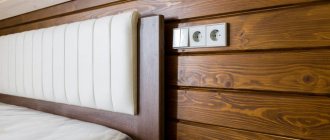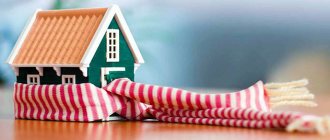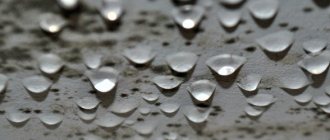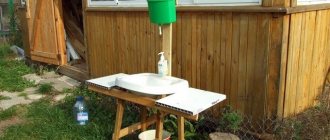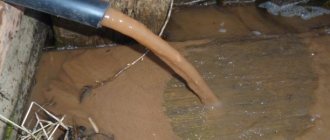Mold, or mold fungi, looks amazing under a microscope, but moldy spots on the walls are no longer so beautiful and are even dangerous to health. The musty damp smell causes discomfort. How to remove mold quickly and effectively?
Before we figure out how to deal with mold, let's get to know this ancient organism a little better. It is known that molds can exist in almost any conditions. They are not afraid of cold, heat, or radiation. Spores of these microorganisms are constantly present next to us, living unnoticed in water, soil, and air. Most often we encounter them when a food product spoils. But mold often settles on household items, clothing, wallpaper, carpet, ceiling, etc.
The color of mold can be different: gray, white, blue, green, orange. It is believed that the most dangerous is black, but any other type does no less harm if it fills more than 20% of the room.
Why is mold in the house dangerous?
In addition to the fact that mold in a room, basement, attic and other rooms destroys walls and supporting structures and spoils the appearance of a building, it is also dangerous to human health. However, many have already heard about this side of the issue. Numerous studies have been conducted, which have resulted in data that the harm of mold is absolutely real, so you should not take stains and stains on the walls lightly.
Mold spores are a powerful allergen. Contact with them is especially dangerous for people with weakened immune systems. Short-term exposure to microorganisms can cause itchy skin, symptoms of asthma and allergies, headaches, conjunctivitis, suffocating cough, and nasal congestion. With prolonged exposure, exacerbation of chronic diseases, muscle cramps, depression, abdominal pain, etc. is possible.
There is an opinion that mold can cause the development of cancer, rheumatism, chronic obstructive pulmonary disease, and infertility.
How to fight
Everyone needs to know about this problem. With mold, everything is quite complicated. Even after making expensive repairs, you will not protect yourself. After some time, new dark spots will begin to creep out from under the tiles. No matter what temperature kills mold, you won't always be able to use the heat treatment method.
The optimal conditions for it are a temperature of +20 °C and high air humidity. The fungus is very afraid of drafts and ventilation - take this into account. The main thing is to ensure good ventilation and reduce air humidity by all available means.
What is the cause of mold in the house?
The most important reasons for the appearance of mold: lack of quality ventilation and high air humidity (above 70-80%). Also, the growth of fungus can be affected by improperly organized heating, poor-quality processing of building materials, insufficient thermal insulation of walls, leaks in the basement, in the attic, the presence of condensation, lack of sunlight, etc.
Most often, mold appears in the basement, subfloor, on the first floor of the house, in the corner of the room, on window slopes, next to the water supply. Depending on the type of fungus, surfaces may become covered with dry and wet stripes, dark spots or a film. Over time, any material, under the influence of a growing fungus, begins to crumble or crack, and it becomes more and more difficult to remove the uninvited guest, because mold eats deep into the surface.
Removing mold is a rather labor-intensive process. Its result depends on the type of microorganisms and the degree of damage to the surface. There is no point in postponing work until later, because... fungi multiply very actively. Therefore, after eliminating the causes of mold, immediately begin treatment.
Before removing mold, equip yourself with a respirator, safety glasses and rubber gloves. Carry out all work in a well-ventilated area, removing children and pets from it.
LiveInternetLiveInternet
Monday, December 07, 2015 19:50 + to quote book Mold in the house Condensation can collect in places where there is a temperature difference and in closed spaces: rooms, vessels, cavities. Stagnant moisture will inevitably cause fungal spores (mold). Mold is a living organism that grows in certain conditions. Depending on the material of the hard surface, it has different names and classes; in total, there are about 400 types of household mold. However, they all originate in the same living conditions, which means that the “killing” conditions for them are also the same. That is, we can remove all types of household mold using the same means. HOW MOLD ETCHING OCCURS Household fungus is afraid of literally everything: drafts, household and food chemicals, salt, frost, heat, ultraviolet radiation and other tangible factors that are relatively safe for humans. Some of these phenomena destroy it, while others stop its development. There are several ways to destroy the fungus: 1. Place it in unacceptable conditions. Once removed from the “home” place, it no longer disturbs the person. 2. Destroy it on the spot. Removal from the surface will give a temporary effect. If indoor conditions do not change, it will appear again. 3. Eliminate fungal spores. This is already more meaningful: treat the area affected by mold with an active compound that will destroy fungal spores that have become embedded in the material. 4. Eliminate conditions favorable for its growth. Mold appears in places with stagnant, humid air. Eliminating this factor will prevent the fungus from multiplying. An additional danger factor for mold is that it not only feeds on moisture, but also retains it. Chemical reactions taking place in spores affect any material, especially wood. COMPOSITIONS AND RECIPES FOR COMBATING MOLD As we have already mentioned, products that attack fungus are available in every pharmacy or household chemicals store. Let's try to understand the degree of effectiveness of each of them, noting the advantages and disadvantages. Bleach Destroys most known types of not only household but also outdoor mold. The “Whiteness” type bleach contains a large percentage of chlorine, which perfectly disinfects materials and liquids, destroying all microorganisms. The undisputed leader in efficiency. 1.
Flaw. Toxic upon reaction, causes irritation of the mucous membrane. From the vapors you can get mild poisoning, and from ingestion - acute poisoning. Price. 1 liter of “Whiteness” costs about 0.5 USD. e. Ammonia (aqueous ammonia) Effective for hard surfaces (non-porous) - countertops, tiles, glass. Not suitable for porous materials - wood, drywall. 2.
Flaw. Up to 50% of the liquid evaporates or loses its properties without having time to react. Acrid odor, may cause serious irritation. Price. 1 liter of aqueous ammonia solution costs ∽ 1.8 USD. e. Borax (borax, tinkal, high-temperature flux) The name of this substance comes from the Arabic “burak” - white. Actively reacts with water, forming an aggressive environment that is safe for humans and coatings. Particularly effective on glazed surfaces (sanitary ware, enamel). 3.
Flaw. It comes in powder form, which is inconvenient to use—you have to prepare a solution. Price. 1 kg of technical borax will cost approximately 1 USD. e. Baking soda (sodium bicarbonate) Like borax, it is an alkali, only more accessible due to distribution. Absolutely harmless and non-toxic, does not emit harmful substances. 4.
Flaw. Low reactivity (a tribute to safety) and relatively high price. Price. 1 kg of purified soda, suitable for food purposes, costs about 1.7 USD. e. 2nd grade baking soda will cost much less - 0.25–0.3 USD. e./kg. Hydrogen peroxide 3% (perhydrol) Active antiviral, antifungal and antibacterial agent. Its original purpose is to destroy fungus, so peroxide is ideal for removing mold. It disinfects the surface and is harmless to humans even if ingested directly. 5.
In industry, perhydrol is actively used as a disinfectant component for water and other media. If desired, you can purchase peroxide of higher concentration - up to 35%. This “strong” (active) composition is used for water preparation and swimming pool cleaning. Flaw. The pharmaceutical preparation does not erase dark spots caused by fungus. Highly concentrated liquid is not sold in stores. Price. Pharmacy packaging of 100 ml costs 0.2 USD. That is, 1 liter of technical peroxide 5% costs about 0.65 USD. e. Peroxide of a higher concentration costs from 1.2 USD. e./l. Vinegar 7–9% Destroys about 80 types of fungus. The weak acid is safe for human skin. Unlike borax and soda, it creates an acidic environment in which mold spores die. Flaw. Acrid fumes and a smell that does not disappear for a long time. Price. 1 liter of table vinegar 9% costs about 0.7 USD. e. Vinegar essence 70% costs approximately 2.5 USD. e./l. By conducting a simple analysis, we can make sure that two substances remain among the “leaders”: 1. Bleach - absolutely effective, but requires respiratory and vision protection. Suitable for large volumes and advanced cases. 2. Hydrogen peroxide (pharmacy) - absolutely harmless, but works with mild degrees of damage. For more complex ones, you will have to purchase technical perhydrol. HELPFUL TIPS FOR COMBATING MOLD 1. Do not try to wash the mold with warm or hot water and soap. The outer part will be removed, but the spores will receive food in the form of soap fats and warm moisture for reproduction. 2. Another recipe for an antifungal solution: 1 part water, 3 parts soda and 1 part washing powder. 3. Only the fungi themselves are removed mechanically (with a brush), but not the spores. The mold will reappear. 4. Ammonia is contained in all windshield wipers. 5. To prevent the formation of spores, it is enough to ventilate the room 2 times a day for 10 minutes. The more intensive the ventilation and the drier the room, the less likely it is for fungus to form. 6. If for some reason the room cannot be ventilated, install a moisture collector or dehumidifier there. Such devices are used by painters to dry rooms in which wallpaper is pasted. 7. Heat and frost do not kill spores, they only stop their growth. With the return of comfortable temperature and humidity conditions, the development of the fungus continues. 6.
Mold is harmful and even hazardous to health. Not only does it intensively process the oxygen we need, but it can also cause a whole bunch of respiratory diseases. Of course, this requires a relatively large volume of fungus, but it always appears from a small amount. Eliminate the slightest manifestations of fungus and take care of your health. Read more: https://prokrasotu.info/topics/plesen-v-dome/ THIS CLEANER KILLS ALL MOLD! PROVEN FOR YEARS! I recommend it to everyone! We have an old house and there used to be mold all the time. We bought expensive chemicals, it cleaned it up, but not for long. On the advice of a neighbor, we made this remedy and for the 4th year now no mold is visible! Keep the recipe: • 2 tsp. tea tree essential oil (for disinfection); • 2 cups of water. 1 tsp alcohol to dissolve the oil (to the bottom) Pour the ingredients into a spray bottle, shake and spray on problem areas. Shelf life is not limited. Vinegar destroys 82% of mold and can also be used to combat mold. Pour vinegar into a spray bottle and spray. The vinegar smell will go away after a few hours. Ammonia. soda.Lubricate problem areas. In the bathroom. - In the bathroom, peroxide will help destroy mold that has appeared and prevent its further appearance. To do this, you need to take a 33-35% solution, mix it with water in equal proportions, and spray the surfaces that have become moldy with a spray bottle. They also use ammonia and soda for this. 1.
| Categories: | For home/Detergents and cleaning products |
Cited 1 time
Like share
0
Like
- I liked the post
- Quoted
- 0
Saved
- Add to quote book
- 0
Save to links
Liked
0
How to treat walls against fungus and mold?
You already know that mold on the walls of your home is dangerous and you need to deal with it immediately. But it's worth doing it right. Do not rush to immediately clean stains from the walls, as fresh spores will scatter throughout the room and settle on unaffected objects. It is better to treat the walls with special disinfectants before starting the procedure and only then scrape off the mold with a hard scraper or brush. Afterwards, dry the wall and ventilate the room, and then proceed to the main treatment. Special antibacterial drugs (Belinka, Well Done, Remmers Schimmel-Stop, etc.), which can be purchased in the store, will do the job well.
To enhance the effect, it is recommended to repeat the treatment after a week.
How to remove mold from a wall using folk remedies? It all depends on the degree of damage to the surface. Severe damage indicates that the fungus has ingrained itself deeply into the surface, so it will have to be destroyed with chemicals. If the stains are still small, safer mold remedies will come to the rescue.
| Mold Repellent | What surfaces is it suitable for? | Mode of application |
| Chlorine bleach | Tile, glass and other non-porous surfaces | Dilute in a ratio of 1:10, spray onto the surface or apply with a sponge |
| Hydrogen peroxide | Any surface, but before use it is worth checking on a small area, because peroxide has bleaching properties | Spray the 3% solution onto the surface or work it onto the walls using a sponge. |
| Borax (sodium salt of boric acid) | Tile, glass, wood | Dilute 1 cup in 2.5 liters of water and apply to the walls with a stiff brush. No need to rinse off. |
| Baking soda | Any surfaces | Dissolve 1 tsp. in a glass of water and spray the affected areas or wipe with a sponge. After an hour, rinse the wall with clean water. |
| Table vinegar | Any surfaces | Spray the wall, then wipe it with a sponge soaked in vinegar. After an hour, rinse the surface with clean water. |
If mold appears on the wallpaper , most likely the walls underneath are also affected. But this does not mean that we urgently need to start a grandiose renovation. First, assess the extent of the damage. If there are few spots and stains and they are localized in one place, you can try to stop the spread of the fungus. To do this, ventilate the room thoroughly and warm it up using a stove or fireplace. Then remove the mold with a soda solution (1 tsp per 1 glass of warm water). Use a soft sponge to avoid damaging the wallpaper. Then let the wall dry. There are other ways to remove mold from wallpaper: vinegar and hydrogen peroxide. Pour them into a spray bottle or apply them to a sponge, then treat the wallpaper. Then dry the wall and ventilate the room well. Just remember that peroxide can discolor the surface being treated.
If the wall is severely damaged, you will have to remove the wallpaper, spray the moldy areas and clean the wall down to the plaster. Then do the processing we mentioned above.
Let's get to know each other better: what is mold?
This is a fungus with a microscopic structure. Despite its simplicity, it has many cells that form long threads - hyphae. The microorganism reproduces through spores. They are constantly present in the air, but are in a calm state. Their activation begins as soon as they find themselves in favorable conditions for development. The main goal of a colony of microorganisms is to grow on the surface in different directions with the need to absorb as many nutrients as possible.
Let's talk about types
In mycology (the science of mushrooms) there are many classifications based on various characteristics. The simplest method of differentiation is by color. According to it, mold can be:
- Black. Forms in the form of spots. Can be found on walls near balconies or windows, on products. Consists of different groups of microorganisms. The most dangerous is aspergillus. Often causes allergies upon contact with skin or intestinal upset when ingested.
- Green. These are ascomycetes. Present on stone surfaces, bakery products and fermented milk products, vegetables. They multiply very quickly. Dangerous for people with reduced immunity.
- White (mukor). These are zygomycete fungi. They can settle on walls, delicacies (bread and cheeses), and in flower pots. Outwardly they resemble cotton wool. They are considered not too dangerous, but can cause gastrointestinal problems, headaches, and skin rashes.
- Yellow. Found on rice, fish, nuts, and liver. Releases aflatoxin. This is a strong carcinogen that can provoke the development of liver cancer or pneumonia.
- Gray. Saprophytic mushrooms look like a grayish coating. Capable of occupying any surface: fabric, paper, plastic, wood, stone. They also attack food and are easily transmitted through flower seeds. It is problematic to withdraw.
The pink and blue species are considered the most harmless. The first can be seen on rotten plant products. The second is in the trees. It is used in the production of gourmet cheeses. Both types do not appear in the apartment.
The main places of localization of the fungus
For mold to occur, special conditions are required. Places most suitable for its appearance:
- Wet areas. The higher the humidity, the faster colonies of fungi will appear there.
- Rooms with temperature changes. Temperature fluctuations cause condensation to form. This is a favorable environment for mold growth.
- Space with poor air circulation: pantry, cellar, dressing rooms.
- Unsealed or loosely sealed food. Mold “loves” vegetables and fruits with a high content of sugar and acid: citrus fruits, peaches, apples, homemade pickles. Can form on porous products - bread, cottage cheese.
Look for the uninvited guest on the walls and ceilings of kitchens, bathrooms, under window sills, behind cabinets, even between the pages of books in damp areas. If it's not there, you can calm down. It is unlikely that the fungus is localized anywhere else.
How to clean mold on windows?
Mold on windows most often appears in houses where double-glazed windows are installed. They are sealed, so condensation often accumulates on the inner surface - a favorable environment for fungal growth. Mold can also appear on slopes, especially in corners. Often the problem occurs due to the fact that the windows are installed incorrectly, with cracks. Through them, moisture enters the house and promotes the growth of fungus. In this case, it is necessary to insulate the cracks and voids or reinstall the window. If the reason is improper operation, then you need to ventilate the room more often and warm the house well. In any case, mold stains must be removed immediately.
Remove the plastic trim from the slopes and the window sill (depending on the extent of the damage). Then spray the moldy areas with an anti-fungal agent or vinegar, clean and dry. After processing, you can use the same products as for the walls. Fill cracks and holes with foam. When everything is dry, install the slopes and window sill in place.
If it is difficult to overcome mold on your own, you should contact special organizations that disinfect premises.
Black mold
It is this type that can be found on the inside or back walls of cabinets, in basements where pickles are stored. She often appears in the bathroom. Sometimes housewives try to remove it mechanically. This is not the best solution. If the mold is disturbed a little, it begins to actively release spores into the air. They are very toxic. Constant intoxication can lead to a disease such as bronchitis.
Knowing the temperature at which mold dies, we can assume that simply rinsing the surface with boiling water is not enough. An industrial hair dryer is required to heat the wall. Or you will have to resort to chemicals.
How to get rid of mold smell?
To remove the smell of mold, you first need to find and destroy its source. Since the fungus grows almost everywhere, an unpleasant aroma can come from clothes, furniture, mattresses, and bedspreads. In this case, it is necessary to carry out general cleaning, wash things by hand, take them out into the sun and dry all textiles. Treat the furniture with undiluted vinegar, then wipe with a clean damp cloth and dry.
Don't try to mask the smell of mold with store-bought aerosols. Using them too often without eliminating the underlying cause of the odor can lead to an even greater increase in humidity in the room, and ultimately to more severe fungal damage.
It is best to freshen the air in a country house after cleaning with the help of natural essential oils , which have antifungal and disinfectant properties. To prepare this remedy for mold smell, add a few drops of oil to a spray bottle with a 5% vinegar solution and regularly spray the air in the room. Essential oils can also be applied directly to mold-treated surfaces.
You can also get rid of the unpleasant odor after removing mold using charcoal . It is enough to place several containers with it in the corners of the room - and after a couple of days the air will become noticeably fresher.
Mold control products
There is no single correct and effective solution to get rid of mold on the walls once and for all. In one case, one remedy will work perfectly, but in another, it will be powerless. In general, the arsenal of each owner of a private house usually consists of two types of tools:
- specialized chemicals;
- folk
It is important to remember that any available means are good for cleaning the surface from microorganisms, but only consistent adherence to all stages of wall treatment will allow you to protect it from re-infection.
How to remove mold - preventive measures
It is also worth taking preventive measures against mold and mildew, without waiting until uninvited guests take you by surprise. First of all, pay attention to cleaning the house at the end of the summer season. After all, it is in winter, when the house is not ventilated and the humidity is higher than normal, that mold can feel like a mistress.
The best method to combat mold is to thoroughly ventilate the room.
To avoid the hassle of dealing with mold later on, be sure to consider a ventilation system. When you are at the dacha, be sure to ventilate the house, and before leaving, check the draft in the ventilation hole. Don't forget to regularly inspect water pipes and radiators. Check the condition of the windows and make sure there are no gaps, cracks or holes where moisture can get in. Also observe the following rules:
- Regularly remove debris from your roof and gutters;
- do not dry wet laundry in a country house;
- install a hood in the kitchen;
- do not fill the window sills with indoor plants, this increases the humidity in the room;
- monitor the condition of wooden parts, cover them with antifungal compounds for prevention;
- Clean regularly and wipe off dust;
- do not place furniture close to the walls, leave 2-3 cm for air circulation.
Household mold is dangerous to human health, so when you arrive at your dacha, you should immediately take measures to destroy it. Be prepared for the fact that this process will be quite lengthy and labor-intensive. And in order not to encounter a problem, be sure to take time for prevention.
spring-cleaning
Alas, these fungi are fantastically resilient. Therefore, trying to simply wash the walls will not be successful. And even if you know at what temperature mold dies, you are unlikely to be completely successful. If a wall is affected by fungus, only the top layer will be affected. And under the plaster a living mycelium will remain. Therefore, you will have to remove the top layer of facing plaster, and then carry out the treatment. Let's look at the basic recommendations on how to deal with this or that type of mold.
We carry out prevention
Agree, it is always easier and cheaper not to eliminate the problem, but to prevent it. Therefore, it is necessary to periodically prevent the appearance of black mold in the house. Such measures include:
- regular ventilation;
- checking the proper operation of ventilation;
- checking the premises for fistulas, leaks, cracks and eliminating them;
- treating all existing building materials with special antiseptic agents (before repairs);
- eliminating holes and cracks in frames, if any;
- ventilation of the bathroom.
Fans for the bathroom
Important! Don't dry things in the bathroom!
Black mold is a dangerous enemy of humans, causing great harm to health. It is possible and necessary to fight it, but it is best not to start the problem and start solving it at a very early stage. Then victory will definitely be on your side.
